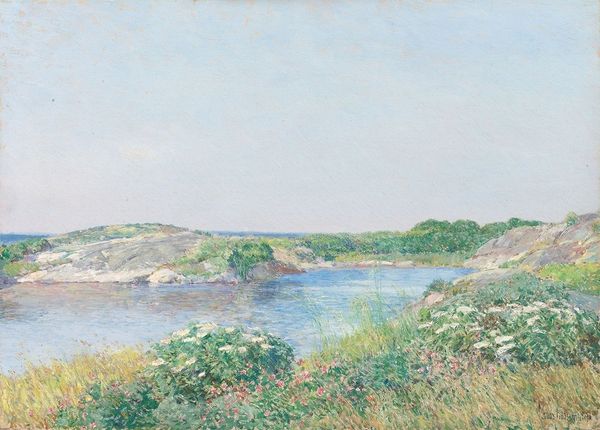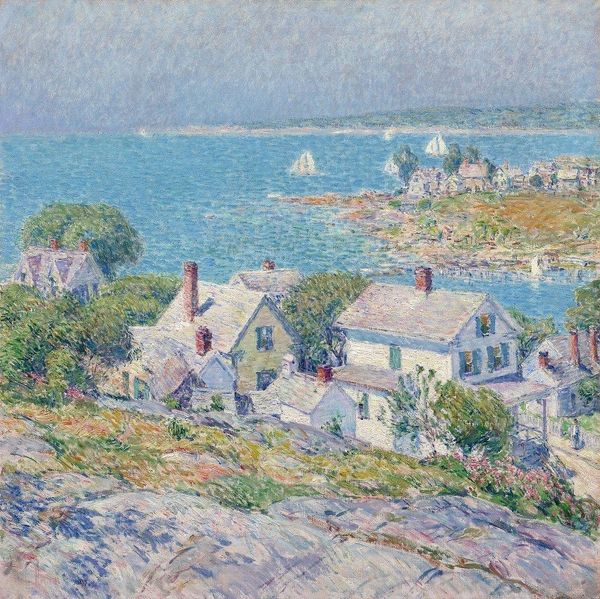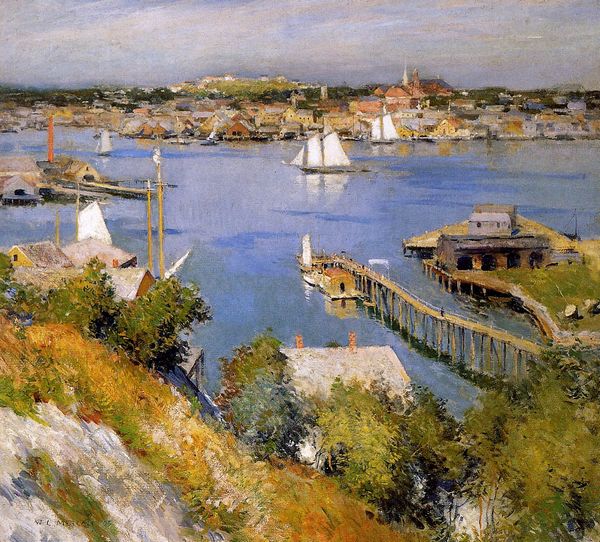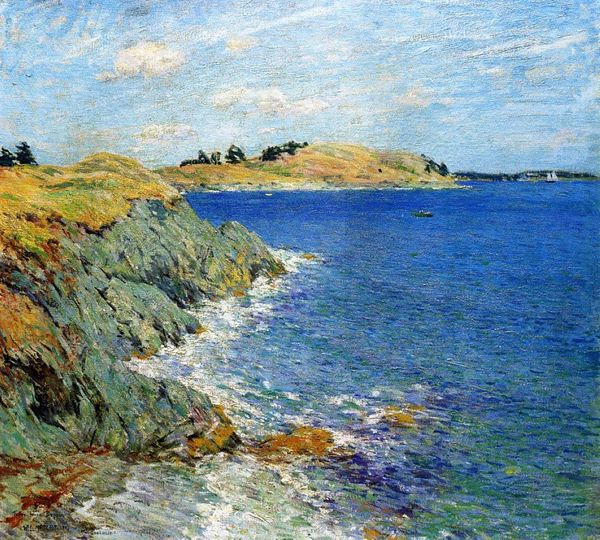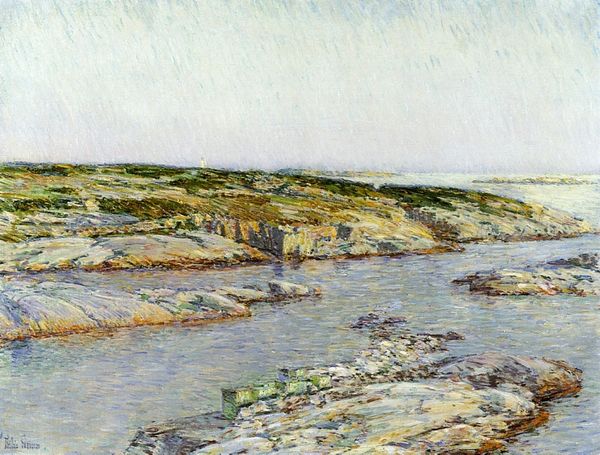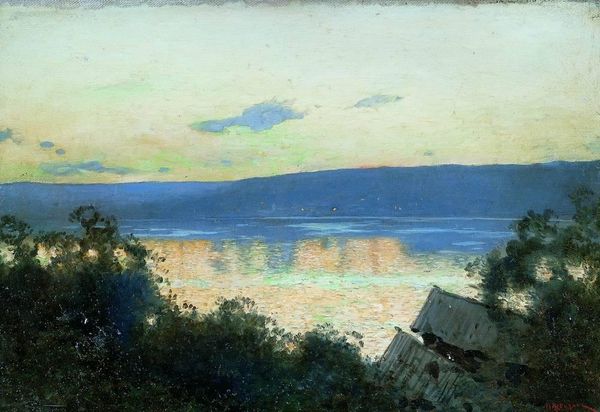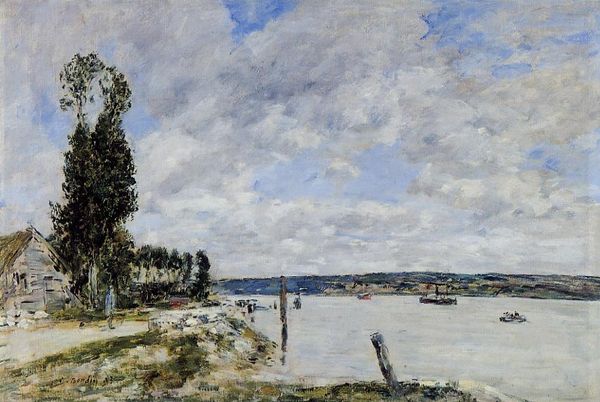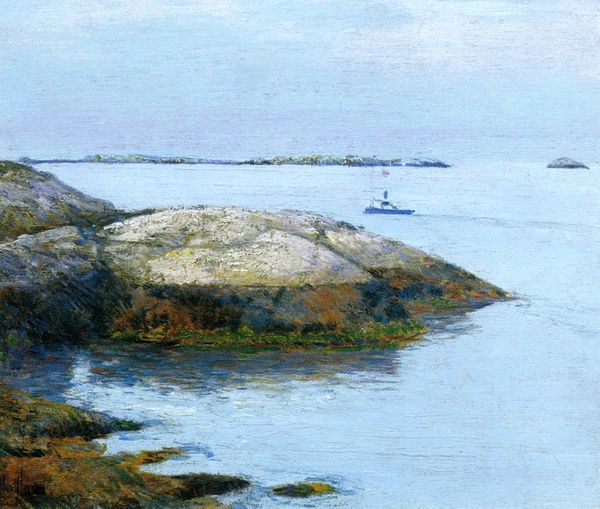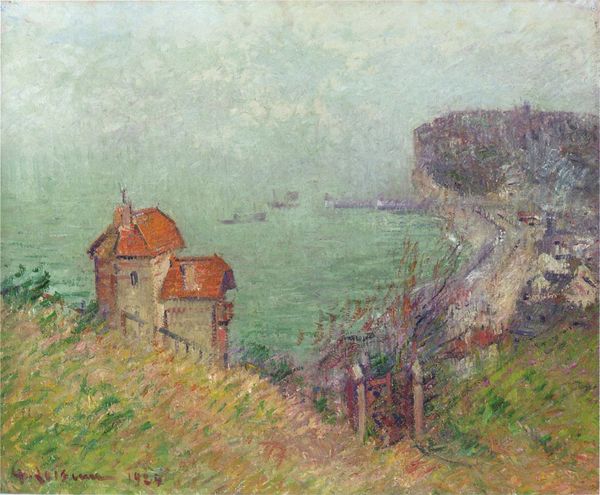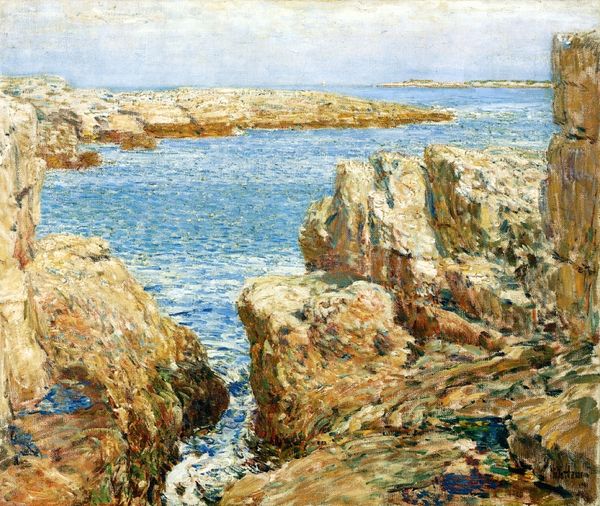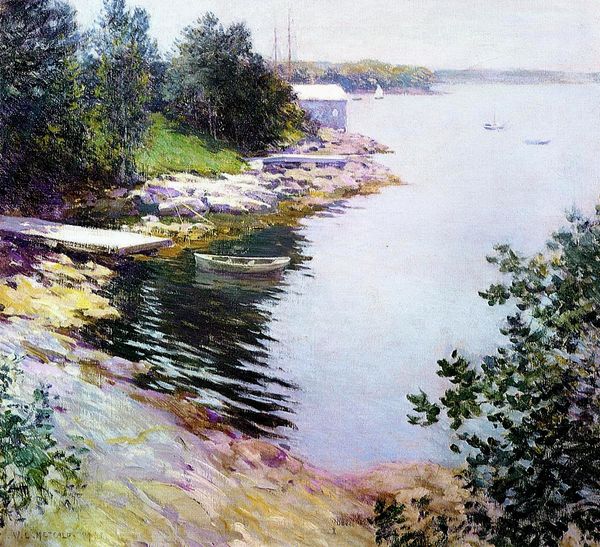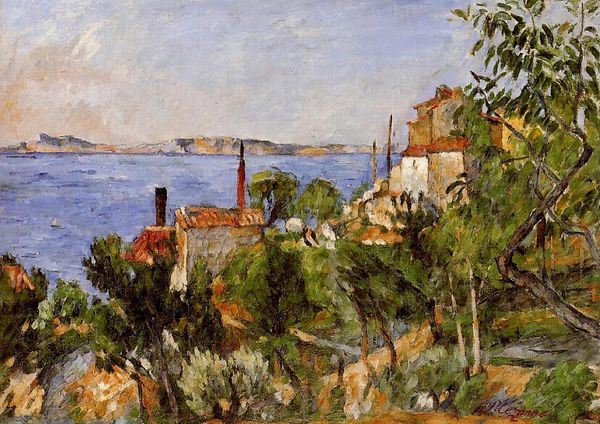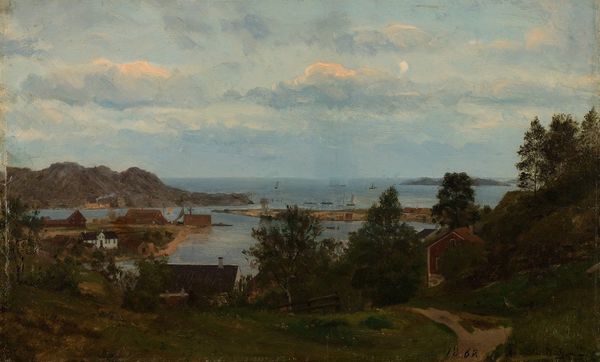
Dimensions: 73.66 x 66.04 cm
Copyright: Public domain
Editor: This is Willard Metcalf's "East Boothbay Harbor," painted in 1904. It’s an oil painting, capturing a harbor scene. The impasto technique gives it a textured feel. How do you interpret this work? Curator: Let’s consider the material conditions of this harbor town around 1904. What would the predominant industries have been? Fishing, shipbuilding, likely some level of nascent tourism. Metcalf's thick application of paint, the impasto, isn’t just about aesthetics; it's a direct representation of the tangible, material world of labor – the fisherman’s calloused hands, the rough texture of timber in shipbuilding. How does the handling of the paint reflect the labor involved? Editor: I see what you mean! The brushstrokes aren't smooth; they’re quite visible and almost rugged, mirroring the tough work in the harbor. Was Metcalf intentionally trying to highlight that? Curator: The Hudson River School and Impressionism both influenced Metcalf. But notice how Metcalf focuses less on the sublime wilderness (Hudson River School) or fleeting light (Impressionism), and more on depicting a working landscape shaped by human activity. Even the placement of houses and boats shows a working system of resource consumption and trade. Editor: So, it’s less about the picturesque beauty and more about the economic reality of the harbor. Curator: Precisely! It's about the raw materials being extracted from the environment and transformed through labor. Consider, too, the materials used to make the painting itself. Pigments, canvas, the artist's labor – all contribute to a representation of a specific social and economic environment. What kind of person consumes a painting like this and what values does the artwork convey in return? Editor: It definitely makes me think about the everyday lives of the people who lived and worked there, and the exchange of labour and leisure now! Curator: It offers a fresh, grounded perspective, shifting away from idealization and romanticism of this popular movement of this era.
Comments
No comments
Be the first to comment and join the conversation on the ultimate creative platform.
